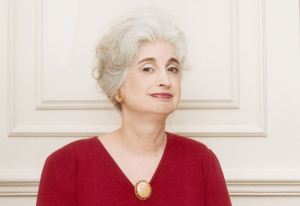By Ben Elgin | Bloomberg
In the fight to ratchet down climate emissions and soothe the most dangerous effects of an overheating planet, one of the most withering setbacks in recent memory wasn’t delivered by the oil industry or coal excavators, but, rather, a group of restaurants in California.
When Berkeley became the first city in the country to ban the extension of gas pipes into new buildings, it targeted a contentious source of climate pollution. The combustion of gas inside of homes and businesses to power things like furnaces, water heaters and stoves accounts for 9% of California’s emissions, or 33 million metric tons of heat-trapping gases per year, equivalent to the entire climate footprint of Hong Kong.
With the US gas system continuing to expand – the industry connects one new customer to the gas grid each minute – Berkeley was the first to try to stop this climate problem from becoming bigger. Since it enacted its ordinance in 2019, more than 100 cities, counties and states across the country have followed.
Today, these efforts are reeling. The California Restaurant Association took the city to court in November 2019, arguing that its 20,000-plus members preferred cooking with a gas flame and that, even though the rule wouldn’t require changes to existing buildings, such an ordinance would limit their options when opening new locations. Moreover, they argued, federal energy laws preempt these aggressive local ordinances.
After a see-sawing legal battle, the restaurants prevailed. When Berkeley’s last-ditch request for a rehearing was rejected earlier this year, the city in March canceled its ordinance, prompting a jubilant CRA to declare it a “significant triumph for chefs and restaurateurs.”
Now, Bloomberg Green has learned, a coalition of gas companies and their supporters are planning to wield the restaurants’ legal victory to beat back similar rules across the western US. This puts restaurants directly at odds with a hospitable planet, as there’s no feasible pathway to avert catastrophic warming if places like California don’t sharply reduce gas combustion in buildings, according to climate experts.
“It’s rather irritating to have restaurant owners put their heads in the sand,” says Robert Howarth, a professor of ecology and environmental biology at Cornell University. “We have to move away from natural gas. The planet demands it.”
This is not the first time restaurants in California have sided with industry giants in an epic battle over public health. In 1987, a year after US Surgeon General C. Everett Koop warned second-hand smoke was causing lung cancer in healthy nonsmokers, Beverly Hills became the first city in the state to ban smoking inside restaurants. Several nearby towns followed with similar proposals.
A couple smokes at the Beverly Hills Café restaurant, after the city’s anti-smoking law was rescinded in 1987.(Ben Martin/Getty Images)
Restaurants howled in protest. Some eateries in Beverly Hills complained their sales plummeted overnight by nearly a third, though tax records later showed no such drop had occurred. Within months, the Beverly Hills city council walked back its rule.
These public health battles, nearly four decades apart, share another striking resemblance: Restaurant groups served as the public face for both efforts, while they worked alongside hidden powerful interests.
Related Articles
Photos: Aurora borealis from the Bay Area and far beyond
Opinion: Accepting fossil fuel funds undermines Stanford’s new Sustainability School
Photos: Tour of the 1,732-foot-long tunnel at the Anderson Dam project
Shelter in southern Brazil is saving dogs from the floodwaters
Protesters gather at factory in Germany for ‘Disrupt Tesla Action Days’
In the smoking fracas, millions of cigarette-company documents later unearthed during litigation revealed the tobacco industry recruited and worked closely with restaurant groups around the country, including CRA, to fight smoking restrictions. The industry even surreptitiously funded and created the Beverly Hills Restaurant Association, which led the successful pushback against the state’s first ban.
“Public health advocates need to understand that, with rare exceptions, when they talk to organized restaurant associations, they are effectively talking to the tobacco industry,” warned researchers at the University of California San Francisco in a 2002 paper.
In today’s fight over gas, CRA also hasn’t acted on its own. It refuses to say who paid the legal bills for its Berkeley suit. As a nonprofit, it must make its tax filings public. In these forms, nonprofits are supposed to disclose contractors to whom they paid at least $100,000 in the previous year. CRA regularly lists law firms working on its behalf, such as those litigating Covid-related restrictions. But the restaurant group has never disclosed a payment to Reichman Jorgensen Lehman & Feldberg LLP, the law firm that spearheaded the Berkeley case.
The Berkeley lawsuit topped the $100,000 threshold. When Sarah Jorgensen, the law firm’s founding partner, spoke at a National Propane Gas Association board meeting in February, she was asked what a legal challenge of this sort would cost, according to a recording of the discussion heard by Bloomberg Green. After an NPGA executive estimated it would require $300,000 to $400,000 to take a case to court and “another couple of hundred thousand” for appeals, Jorgensen said “we definitely spent more than that on Berkeley.” In a written response to questions, Jorgensen declined to say who paid their legal bills.
So who picked up the tab? SoCalGas, the nation’s largest gas utility whose territory covers 24,000 square miles from the Mexican border to central California, paid Reichman Jorgensen more than $4 million between 2020 and 2022, according to its regulatory filings and as reported last year by the Sacramento Bee. When compelled by state regulators to explain some of these payments, SoCalGas denied it was for the Berkeley case, but rather to examine legal issues such as “government actions potentially affecting natural gas service” and “whether they might be preempted by federal law” (which was the core issue in the Berkeley case).
Meanwhile, SoCalGas and San Diego Gas & Electric, both subsidiaries of energy giant Sempra, combined to contribute over $1.3 million to CRA and its charitable arm since 2019, a sharp uptick from previous years. In a statement, SoCalGas said that it didn’t fund the Berkeley suit and its contributions went to the restaurant association’s charitable arm, which supported eating establishments that struggled during the pandemic.
Some close watchers of the utility, though, don’t buy it. Given the payments funded an examination of “the very same legal issues raised in that litigation,” declared the Public Advocates Office, an independent watchdog for the state’s utility regulator in a filing last year, “it strains credibility to suggest that the utility did not fund research that supported the California Restaurant Association’s litigation.”
Matt Vespa, a senior attorney at Earthjustice and lecturer at the University of California Berkeley School of Law, who dug through a thicket of utility filings to unearth many of the gas industry payments, agrees. “It’s clear to us that SoCalGas underwrote the lawsuit,” he says. (SoCalGas called such claims “irresponsible.”)
Jot Condie, chief executive officer of CRA, has dismissed such questions, telling one news outlet back in 2019 that it amounted to “looking for monsters under the bed.” He declined to be interviewed by Bloomberg Green and would not say who funded the suit, but in written responses to questions, Condie rejected parallels to the indoor-smoking fight. “If comparing these two dissimilar issues decades apart is intended to portray the association as doing the bidding for other interests, it’s an inaccurate and misleading portrayal of this association’s 118-year history,” he said.
Jot Condie speaks during a press conference in San Francisco in 2021.( Jane Tyska/East Bay Times/)
He added that “the decision to fight the illegal city ordinances was CRA’s alone,” and that it supports California’s climate goals. “There is a way to transition to a greener economy without violating federal energy law and harming the restaurant community,” he said. When asked for details on what such a low-carbon pathway would look like, he declined to provide specifics. “The emphasis must be on a transition,” he said. “No economy, industry, or business can be expected to flip a switch overnight.” (Berkeley’s rule wouldn’t have required any changes to existing restaurants.)
For longtime tobacco watchdogs, like Joelle Lester, executive director of the Public Health Law Center at the Mitchell Hamline School of Law, it amounts to more than a striking case of déjà vu. They’re concerned the tactics that once slowed indoor-smoking bans will also stymie efforts to solve climate change.
“We started realizing how closely the gas companies’ tactics mirror Big Tobacco, almost like they’re following a script,” says Lester, whose group recently published a report examining the similarities. “We thought it was important to sound the alarm that there’s this other industry doing really the same thing.”
Gas wasn’t always a widely viewed climate villain, with the Center for American Progress, a left-leaning think tank, even heralding it 15 years ago as a “bridge fuel” to a cleaner future. When burned, it produces about half the heat-trapping emissions of coal. In the mid 2000s, new drilling techniques like fracking unlocked huge quantities of cheap gas. Coal plants couldn’t compete on price and began shutting down.
But as many studies have shown, the climate harms from gas are extensive. When methane is unearthed and delivered to homes and businesses through thousands of miles of pipelines, some of the gas escapes. Because unburned methane causes more than 80 times the warming as an equivalent amount of CO2 over two decades, these leaks nullify much of the fuel’s improvement over coal.
Governments today are pushing for dramatic shifts away from gas. Lawmakers in the European Union agreed in April to abolish fossil fuels in new construction by 2030, while requiring retrofits for the least-efficient buildings. New York State, meanwhile, enacted a rule last year to ban gas in most new construction. Reichman Jorgensen filed a suit in October to block it on behalf of a slew of plaintiffs including homebuilders and gas companies. (The New York State Restaurant Association says it’s concerned about the rule but didn’t join the suit because restaurants are exempt from the ban.)
The grim outlook for gas has sparked energetic pushback by restaurant groups around the country. In the District of Columbia, where the combustion of gas in buildings contributes 22% of its climate footprint, the Restaurant Association of Metropolitan Washington emailed members in February warning them of “misguided energy policies” that would limit their access to gas. It urged them to become advocates for their local utility, Washington Gas, describing it as a “trusted partner to the business community for over 175 years.” The utility recently fought a rule that would fund retrofits and electrification of homes for 30,000 lower-income residents. (RAMW chief executive Shawn Townsend declined to comment.)
This issue is supercharged in California, where homes and businesses are more reliant on gas than in any other state. That’s why state regulators, when crafting a blueprint to reach California’s goal of a 40% cut in emissions by 2030, stressed the need to shrink the state’s gas system and halt expansion of gas pipes into new buildings.
“If we’re going to have a chance of slowing global warming, we have to deal with the buildings problem,” says Rafael Mandelman, a San Francisco supervisor who authored a rule requiring new buildings in the city to be all-electric beginning in 2021. “It’s an imperative if human beings are going to live comfortably on this planet.”
The gas industry warns these policies will hike customer bills and increase the possibility of electric blackouts. “The choice available to us isn’t how to convert our nation’s energy system away from natural gas but how the customers can continue to benefit from the country’s abundance of affordable natural gas and ensure reliability and resiliency,” said American Gas Association chief executive officer Karen Harbert in a written statement.
Many gas companies also contend the harmful impacts of their fuel can be alleviated by mixing in vast quantities of methane captured from dairy farms and landfills. This so-called “renewable natural gas” counts less towards climate change than fossil gas, because it comes from sources that likely would have vented the methane into the atmosphere.
But state officials aren’t nearly as optimistic. Utility regulators in Massachusetts, for instance, who are examining the future of their gas system as the state tries to slash emissions by 90%, recently rejected proposals by gas companies to bank heavily on RNG, highlighting concerns about its cost and availability. The California Energy Commission came to a similar conclusion in a 2021 report, finding there wasn’t nearly enough RNG to decarbonize buildings and that maximizing its limited supply would cost more than seven times as much as electrification.
But a sharp turn away from gas requires a level of government intervention that the California Restaurant Association has long shunned. The group traces its beginnings to 1906, when a café owner in Los Angeles “got sick and tired of being told how to run his business by City Hall,” Condie recounted during a luncheon speech several years ago. That café operator, he said, “gathered a bunch of restaurateurs and said, ‘We ought to form an organization and fight back against some of these regulations.’” Ever since, Condie added, CRA’s “mission hasn’t changed. That’s what we do.”
Condie has spent much of his career fighting government edicts. During the 1990s, after a stint as a campaign manager and legislative aide to Republican lawmakers in the California state assembly, he worked for the California Manufacturers Association. There, he worked with the “Thursday Group,” a powerful coalition of industry groups that challenged environmental rules they deemed harmful to the state’s business interests, such as early efforts to regulate CO2.
Related Articles
Photos: Aurora borealis from the Bay Area and far beyond
Opinion: Accepting fossil fuel funds undermines Stanford’s new Sustainability School
Photos: Tour of the 1,732-foot-long tunnel at the Anderson Dam project
Shelter in southern Brazil is saving dogs from the floodwaters
Protesters gather at factory in Germany for ‘Disrupt Tesla Action Days’
Since Condie took the reins at the restaurant association in 2004, the group has spent time fighting a wide array of measures, like minimum-wage hikes and bans on polystyrene takeout containers, arguing they would erode restaurants’ profits. When a proposal emerged in 2018 for California to study ways to reduce emissions in buildings, CRA officials called it an attack on their preferred fuel. “We’re still not sure how a restaurant is going to tell a chef to not use natural gas,” a CRA spokeswoman retorted in a video briefing. “May as well tell them: ‘Put your knives down and forget the pots and pans, too!’”
On a stormy morning this February, Sarah Jorgensen was warmly introduced to the board of the National Propane Gas Association, which had gathered in a wood-paneled conference room at a hotel perched over Monterey Bay along California’s central coast. There, the Harvard-educated lawyer was feted for her crucial role in beating back gas restrictions around the country. “Sarah has been an absolute asset for the propane and natural gas industry over the past several years,” NPGA’s chief executive Stephen Kaminski told the audience, according to a recording of the event.
Just weeks earlier, Jorgensen scored a big victory on the restaurants’ behalf when a federal appeals court in the Ninth Circuit shot down Berkeley’s request for a rehearing, all but ending the four-year legal battle. This now meant that scores of cities and counties that followed Berkeley to restrict gas in new buildings might be in violation of the court’s ruling, whose jurisdiction covers nine states in the western US.
The plan now, Kaminski explained to the audience, is to reach out to these local governments “and, for lack of a better word, strong-arming those municipalities into following the law.” Jorgensen then said this might begin with an initial “letter-writing campaign” to these cities to see if they’re going to withdraw their rules.
“The decision doesn’t do too much good if people just don’t follow it,” she told the audience. “If cities still don’t comply, I think there will have to be a couple of lawsuits.”
A chef cooks over a flame at a restaurant in the Oakland Food Hall in 2021.(Stephen Lam/The San Francisco Chronicle/Getty Images)
When asked about the remarks, Jorgensen replied in writing that any efforts to enforce the court’s decision are “confidential client matters.” Kaminski said in a statement that “NPGA does not strong-arm,” but, rather, is “exploring” whether local governments are continuing to enforce gas bans “despite binding jurisprudence” from the Berkeley suit.
While many cities, including San Francisco and Los Angeles, are sticking with their gas bans, at least 10 others, including Sacramento and Menlo Park, have already halted their rules after the Berkeley decision.
There are other endeavors that could slow the expansion of gas in California. The state’s utilities have long used ratepayer money to help fund the extension of gas and electric service to new homes and buildings. The California Public Utilities Commission recently abolished this practice for any new buildings using gas. This will add $28,000 to the average home that wants to use gas, and over $95,000 for new commercial buildings.
Meanwhile, the Bay Area Air Quality Management District, which regulates air pollution for over 7 million people in and around San Francisco, has implemented rules that will effectively ban the sale of new gas-powered water heaters and furnaces. These regulations will be phased in starting in 2027.
Gas companies “are not going to win this thing,” says Charlie Spatz, research manager at the Energy and Policy Institute, a utility watchdog. “The whole point of the lawsuits is to intimidate the cities and wear them down.”
Ironically, the first major blow to the tobacco industry’s vice-like grip over restaurant groups was delivered by the California Restaurant Association. After adopting a resolution opposing smoking bans in 1983 and working alongside cigarette companies for years, CRA knew they were losing and began to tire of the struggle, according to Paul McIntyre, who helped run government and public affairs for the group in the 1980s and 1990s.
“It was like the restaurant association had become a smoking association,” says McIntyre. In 1990, after months of tortured deliberations and a contentious board meeting, CRA held a press conference to announce a monumental shift: It would now call for a statewide smoking ban in all public places.
In 1995, California became the first state to prohibit smoking in enclosed workplaces, including restaurants. Three years later, it extended the ban to bars and taverns. ( Boris Yaro/Los Angeles Times/Getty Images)
It’s unclear if any similar turnabout is in the cards for California restaurants today. But loyalty to gas may not be ironclad.
Chipotle Mexican Grill, for instance, has vowed to halve climate-warming emissions from its 3,500 restaurants by 2030. It recently announced a new all-electric kitchen design that it plans to implement at over 100 locations this year.
Meanwhile, induction cooktops, which use electricity to send pulses of electromagnetic energy to heat up cookware, have made significant improvements and “generally outperform” all other options, including gas, according to Consumer Reports. “No other technology we’ve tested is speedier.”
But induction ranges cost two to three times more than a comparable gas stove. And some restaurants will need to upgrade the electric connection into their building to handle the increased power demands.
Induction cooktops are more precise than gas stoves, though the potential costs to retrofit could add tens of thousands of dollars (Juan Algar/Moment/Getty Images)
“The technology exists, it is state of the art and it is expensive,” says Sammy Monsour, a chef who co-owns and operates Joyce, a restaurant in downtown Los Angeles, which uses gas.
That can be too tall an order for restaurants already facing huge hurdles, he says. So, if governments want to phase out gas, he says, there needs to be plenty of financial support to help restaurants make that jump.
But restaurants need to get on the right side of the climate issue, Monsour adds, and stop fighting gas bans that have no impact on existing buildings. “That’s a little ridiculous to hold back progress for an if-what-maybe situation,” he says. “We do need to be greener. We do need to get away from natural gas.”
More stories like this are available on bloomberg.com
©2024 Bloomberg L.P.












